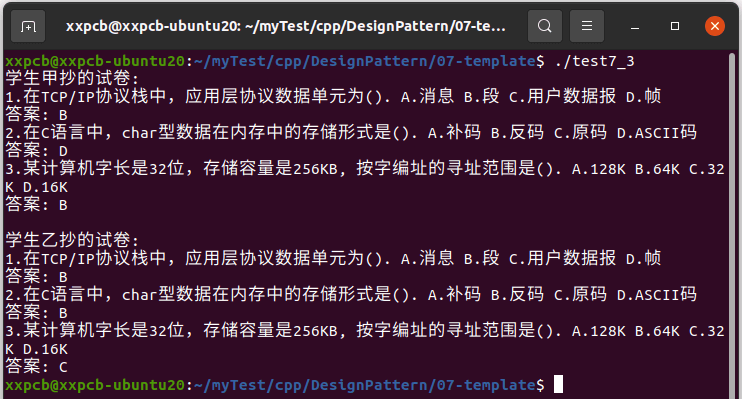问题描述
给你一个 m 行 n 列的矩阵 matrix ,请按照 顺时针螺旋顺序 ,返回矩阵中的所有元素。
示例 1:

输入: matrix = [[1,2,3],[4,5,6],[7,8,9]]
输出: [1,2,3,6,9,8,7,4,5]
示例 2:

输入: matrix = [[1,2,3,4],[5,6,7,8],[9,10,11,12]]
输出: [1,2,3,4,8,12,11,10,9,5,6,7]
提示:
m == matrix.lengthn == matrix[i].length1 <= m, n <= 10-100 <= matrix[i][j] <= 100
分析解答
-
定义四个边界:
top表示当前上边界,初始为 0。bottom表示当前下边界,初始为m - 1。left表示当前左边界,初始为 0。right表示当前右边界,初始为n - 1。
-
循环遍历矩阵:
- 从左到右遍历顶部边界,然后将
top下移。 - 从上到下遍历右边界,然后将
right左移。 - 从右到左遍历底部边界(如果还没有遍历过),然后将
bottom上移。 - 从下到上遍历左边界(如果还没有遍历过),然后将
left右移。
- 从左到右遍历顶部边界,然后将
function spiralOrder(matrix) {
if (matrix.length === 0) return [];
const result = [];
let top = 0, bottom = matrix.length - 1;
let left = 0, right = matrix[0].length - 1;
while (top <= bottom && left <= right) {
// 从左到右遍历顶部
for (let i = left; i <= right; i++) {
result.push(matrix[top][i]);
}
top++;
// 从上到下遍历右边界
for (let i = top; i <= bottom; i++) {
result.push(matrix[i][right]);
}
right--;
// 从右到左遍历底部
if (top <= bottom) {
for (let i = right; i >= left; i--) {
result.push(matrix[bottom][i]);
}
bottom--;
}
// 从下到上遍历左边界
if (left <= right) {
for (let i = bottom; i >= top; i--) {
result.push(matrix[i][left]);
}
left++;
}
}
return result;
}
// 测试示例
console.log(spiralOrder([[1,2,3],[4,5,6],[7,8,9]])); // 输出: [1,2,3,6,9,8,7,4,5]
console.log(spiralOrder([[1,2,3,4],[5,6,7,8],[9,10,11,12]])); // 输出: [1,2,3,4,8,12,11,10,9,5,6,7]
遍历矩阵:
- 按顺时针顺序依次遍历上、右、下、左四个边界,将对应的元素添加到结果数组中。
- 每遍历完一个边界,就缩小对应的边界值,逐渐向内层推进。
- 使用条件判断来避免重复遍历同一行或同一列。
if (top <= bottom) 和 if (left <= right) 的作用:
-
if (top <= bottom)的作用:- 当从左到右遍历完
top行,以及从上到下遍历完right列后,会将bottom行从右到左遍历。 - 然而,有可能在遍历
top行之后,top已经超过了bottom(说明已经没有未遍历的行),所以需要先判断top <= bottom是否成立。如果不成立,说明不需要再遍历bottom行,避免重复处理。
- 当从左到右遍历完
-
if (left <= right)的作用:- 当从右到左遍历完
bottom行后,会将left列从下到上遍历。 - 同理,如果在遍历
right列之后,left已经超过了right(说明已经没有未遍历的列),那么就不需要再遍历left列。因此,先判断left <= right是否成立。
- 当从右到左遍历完
复杂度分析
- 时间复杂度:O(m×n)O(m \times n)O(m×n),因为每个元素会被访问一次。
- 空间复杂度:O(1)O(1)O(1),除了返回结果外,额外使用的空间是常数级别。



















